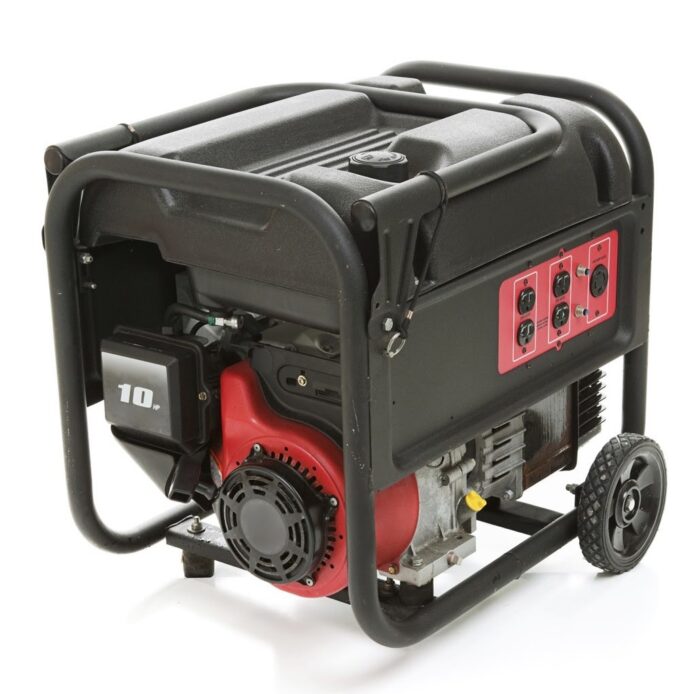Our daily lives are packed with devices and appliances that require constant power. We’ve reached a point where going anywhere without electricity is no longer feasible. Just about everyone likes to bring their phones, laptops, cookers, and a whole array of other devices and appliances with them.
All of these require a power source, which is precisely where portable generators come into play. Here’s all you need to know about portable generators and what’s available on the market at this moment.
What is a Portable Generator?
A portable generator is a small power plant that produces electricity using an internal combustion engine. There are generally two types of generators used in homes across the world – stationary and portable. Stationary generators are a great way to ensure a constant feed of power even when the city grid goes down. However, they have a few flaws. For one, they are stationary.
Once you install them, you can’t move them. Then there’s the fact that these units cost a lot of money. Considering that most cities in the United States have a near-perfect track record of power delivery, many see stationary generators as overkill despite the tangible increases in power outage incidents.
Why Portable Generators?
On the other hand, portable generators are much more flexible. They can help you bridge whatever power delivery you might experience at home, but they can also be used on a camping trip. The fact that portable generators are so mobile makes them a massive asset for power-hungry consumers who require a constant feed of electricity.
There’s also the matter of affordability. A portable generator is much cheaper on average than a stationary one. Sure, much of that cost difference is tanked by the lesser power output of portable generators, but the power you get is more than enough to help you survive whatever event had caused the outage in the first place. All of this makes using a portable generator as a power delivery safety net much more feasible. The key is finding the generator that fits your needs.
How to Choose the Right Portable Generator?
Portable generators come in a variety of flavors. Experts over at Generator Grid have put together an awesome guide on what’s currently available, click here to check out their current recommendations. That being said, different brands prioritize different features. That way, the consumers have a whole array of specs to choose from. Every generator has one metric that matters the most – power output.
Power Output
Every home has a unique power requirement profile. Knowing how much power you need at any given time should be the starting point of your search for the appropriate generator. If we take that an average home uses around 5,000 Watts to cover the most basic appliances, we’re left with a realization that you need to choose your generator wisely.
Starting Watts vs. Running Watts
Unfortunately, not all watts are created equal when it comes to portable generators. There are running watts and starting watts. Both of these are extremely important. Running watts represent the amount of power a generator can continuously produce. This is the power that runs the appliances and devices. Your generator can deliver running watts for as long as it has fuel in the tank.
Starting watts are a whole different beast. This type of power is only available for a brief period of time. Most appliances have a spike in power consumption when they’re first starting up. Your fridge has a compressor that needs to get up to speed. The same applies to anything that uses an electric motor to deliver power. That initial load on the network is covered by starting power. The trick is to understand the difference between the two as some manufacturers like to advertise starting wattage while hiding the running wattage of their generators.
What Will You Use the Generator For?
Although power is definitely the main criteria for picking a portable generator, you also need to account for the intended use. Users who are looking for something to provide their home appliances with power in case of the storm-induced outage will most likely care less for overall generator weight.
On the other hand, those who are buying a generator mainly for camping or tail-gating will definitely appreciate a lighter unit. Maybe you’ll use yours for both of these. Either way, it’s important to sit down and be realistic about your generator needs ahead of actually making a decision.
Carbon Monoxide Safety
Carbon monoxide is something every portable generator owner has to deal with. Considering how deadly this gas is, it’s highly recommended that you never use a generator inside your home and that you keep it at a safe distance from the house. With that said, different generators have different CO ratings and CO safety features. Get the best one your money can buy.
Use a Transfer Switch
The last piece of advice we’d like to give you is always to use a transfer switch, no matter what type of generators you go for. A transfer switch is an important safety feature that can potentially prevent your appliances from being damaged.
Additionally, running the power from your generator through a transfer switch is much more convenient. You don’t have to run individual cables to individual appliances. Instead, you just plug the generator into a single point in your home and run the entire grid that way.
Are Portable Generators Worth It?
Portable generators are definitely worth the investment. These devices can save you a lot of money in case of a power outage. Owning one and maintaining a modern portable generator is relatively easy, so long as you get a quality one. We’ve shown you the basic things to look out for when choosing the right model.
All you have to do now is sit down and compile a shortlist of models that best fit your needs. Sticking to well-known brands such as Honda is always a good way to approach making that shortlist. Use trusted brands and explore different models they offer. Chances are you’ll find the right one fairly easily.



















